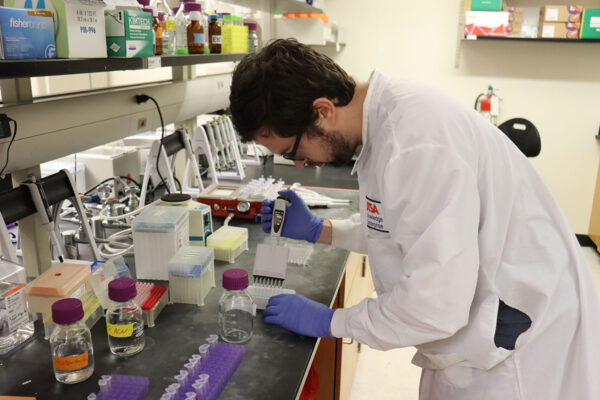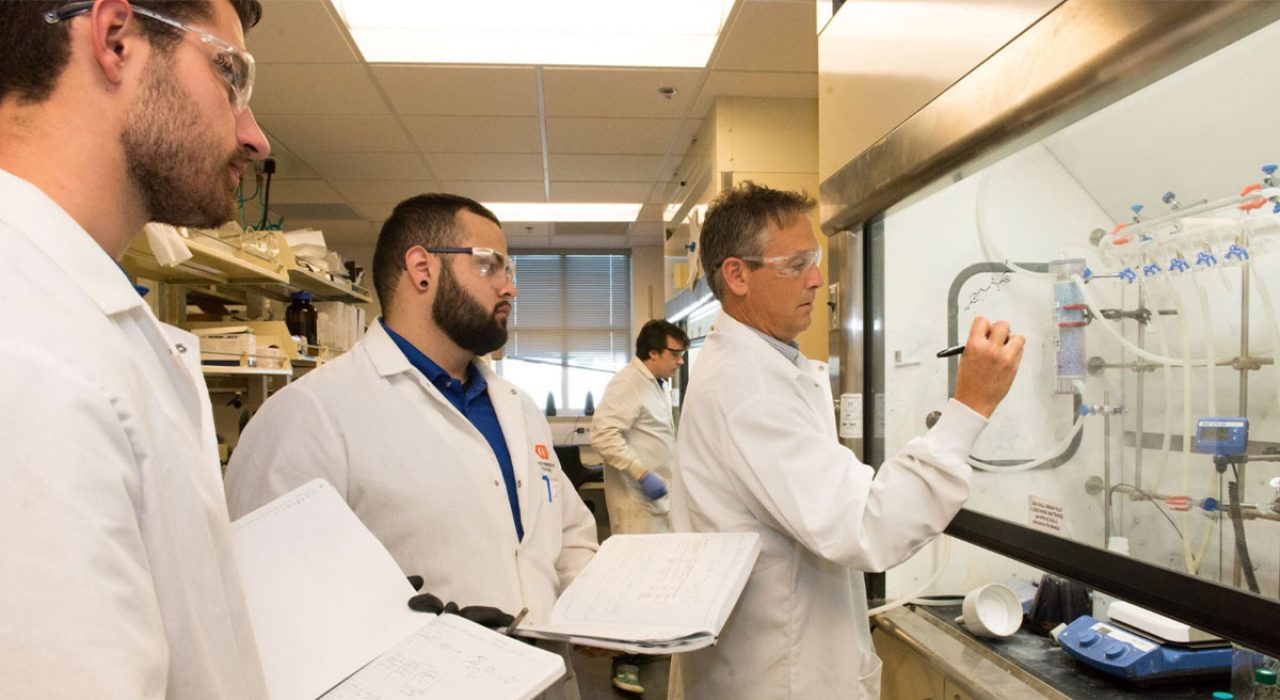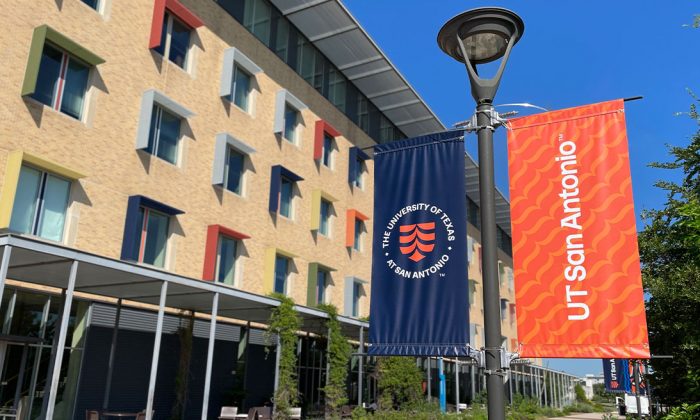Editor’s note: This article is part of a series that demonstrates research collaborations between UTSA and UT Health San Antonio, spotlighting the many opportunities for groundbreaking discoveries across disciplines that will continue at the new UT San Antonio.
Chronic pain is one of the most common and expensive health problems in the nation, affecting an estimated one in five U.S. adults and costing around $600 billion each year in medical expenses, lost productivity and disability, according to the Centers for Disease Control and Prevention (CDC).
Stanton McHardy, director of the Center for Innovative Drug Discovery (CIDD) and professor of chemistry, is contributing to three groundbreaking research programs aimed at developing safe, non-opioid medications for managing pain.
For many in Texas, opioids are a common prescription for pain relief, but these powerful drugs carry significant risks, including addiction and overdose. According to the Texas Department of State Health Services (DSHS), Texas’s drug poisoning deaths, which are largely attributed to opioid overdoses, have increased by more than 75% in the past five years.
“These research projects are about finding better solutions,” said McHardy. “The development of novel non-opioid pain relief medications is of incredible medical significance and provides strong societal benefits.”
Targeting the enzyme
In partnership with Kenneth M. Hargreaves, director of the Center for Pain Therapeutics and Addiction Research at UT Health San Antonio, McHardy is developing small-molecule inhibitors that block a type of pain-related enzyme called PLA2. By targeting this enzyme, the team hopes to design effective, non-addictive medications that will prevent opioid use disorder (OUD) before it starts.
“My research at UTSA focuses on the design, synthesis and structure-activity relationship optimization of small molecules through medicinal chemistry studies,” added McHardy. “Our expertise will be applied towards discovering potent and efficacious small molecule inhibitors for the development of non-opioid pain relief therapeutics.”
Working closely with McHardy is Radhika Amaradhi, special research associate and lead chemist on the research program. They are joined by other staff from the Center for Innovative Drug Discovery and several UTSA students in McHardy’s research group who will be involved in the molecular analysis, computational studies and chemical synthesis required to discover these promising targets for drug development.

Specific pain receptors
In a separate project funded by the National Institutes of Health, McHardy is collaborating with William Clarke, distinguished teaching professor and Maharaj Ticku Professor of Pharmacology, and Kelly Berg, Research Professor at UT Health San Antonio, on an innovative approach to pain management by targeting pain-sensing nerves in the body rather than the brain.
This work focuses on two specific pain receptors, known as delta opioid receptor (DOR) and kappa opioid receptor (KOR). These receptors bind to each other to form a DOR-KOR heteromer. When the heteromer is selectively activated, pain is significantly reduced without the risks linked to traditional opioids.
The research group is using a combination of chemical synthesis and computer-based drug screening to identify compounds that work only on this DOR-KOR heteromer, which could establish the foundation for a new class of painkillers that are both safe and effective.
In McHardy’s lab, Kallee Diaz, UTSA doctoral student, is executing all the medicinal chemistry research and Daniel Rounds, UTSA senior majoring in chemistry, is working under the mentorship of Nick Clanton, assistant director in the CIDD Pre-clinical Pharmacology Core, who is also supporting the program with molecular modeling.
Current treatment options are limited and consist of long-term opioid therapy, which is addictive and loses effectiveness over time. A third UTSA research project was recently published in JCI Insight, a Gold Open Access journal that publishes studies related to the treatment of disease, addressing chemotherapy-induced peripheral neuropathy (CIPN), a debilitating nerve condition that affects about half of chemotherapy patients a year after treatment.
Reduced nerve pain
McHardy collaborated with Robert Messing, professor of neuroscience and neurology at UT Austin, and Michela “Micky” Marinelli, associate professor of neuroscience at UT Austin, and Jon Levine, professor emeritus of oral and maxillofacial surgery at the University of California San Francisco and the UTSA Voelcker Preclinical Pharmacology Core, to develop a compound called CP612 (CIDD-0150612) that blocks a pain-related enzyme known as PKCε.
The team in McHardy’s lab consists of Hans De Kraker, a post-doctoral researcher, and Leslie Barerra UT San Antonio doctoral student, with additional support from Clanton in the Voelcker Preclinical Pharmacology Core. In research studies on the lead compound the team developed, CP612 reduced nerve pain caused by chemotherapy and also eased pain during opioid withdrawal, but without being addictive or interfering with other pain medications.
“By building multi-disciplinary research teams and incorporating key technologies and focusing on novel drug targets, our collaborative research hopes to identify novel treatment options for millions living with chronic pain,” McHardy said. “Additionally, incorporating specific, hypothesis-driven research aims into these programs allows UTSA students to be thoroughly involved, by achieving their degree, training and thesis requirements, while simultaneously learning multiple aspects of drug discovery programs.”



